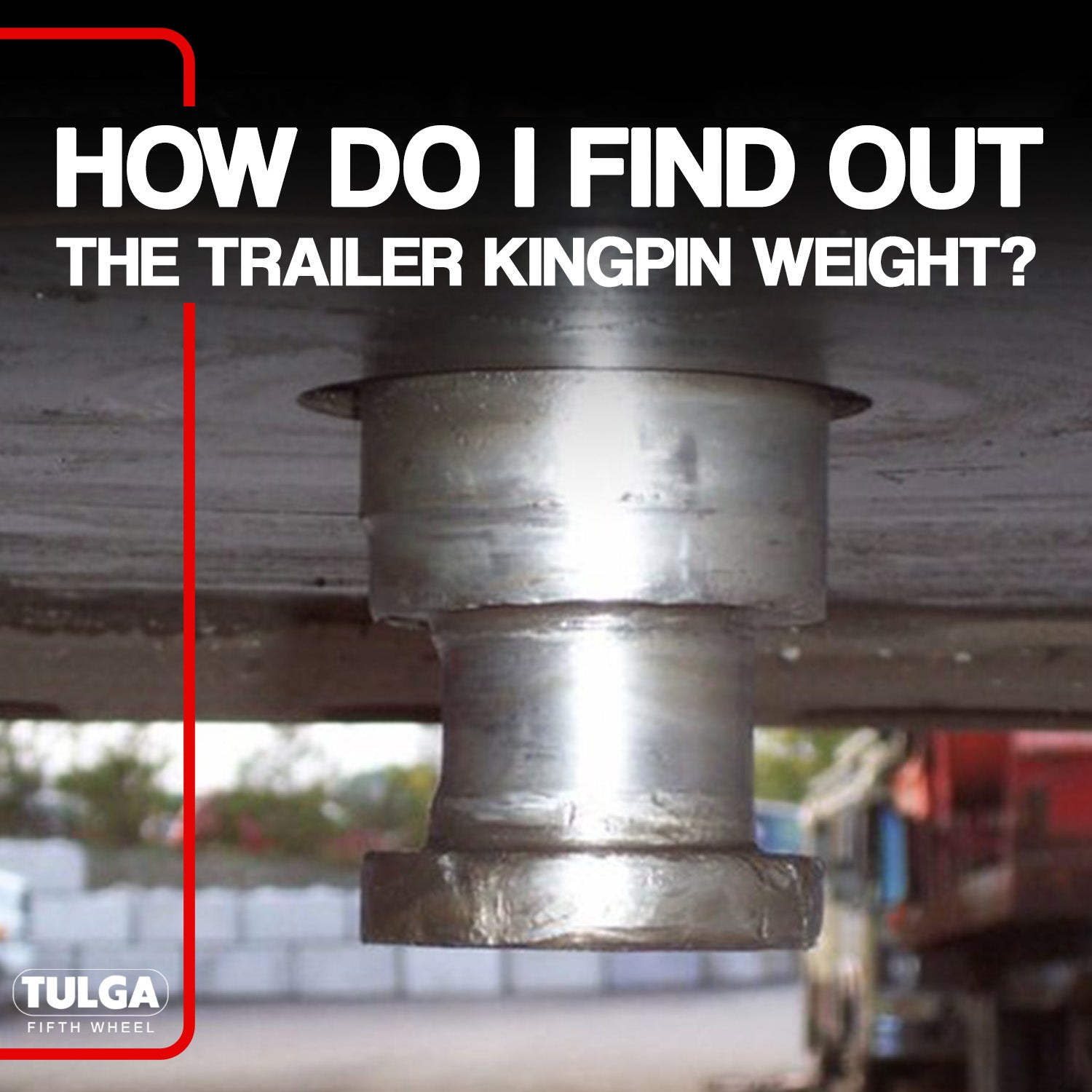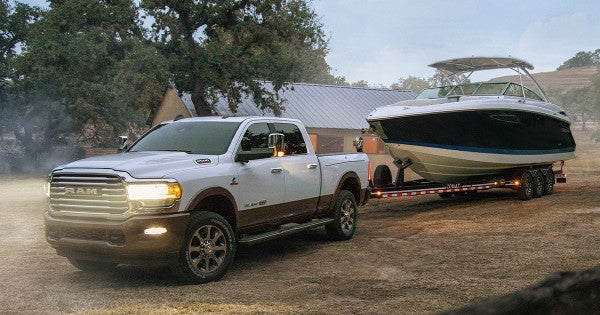Call (888) 611 2366
Support@tulgafifthwheel.com
Call (888) 611 2366
Support@tulgafifthwheel.com


The 5th wheel is one of the most practical devices that transforms your vehicle into a multifunctional facility. This is enabled via a hitch that is attached to your SUV, truck, RV, tractor, or lorry. Despite the complicated duties the fifth wheel serves, the system is quite simple. Everything you need is a convenient trailer capable of towing the total weight, the appropriate type of hitch to receive this force, a sturdy fifth wheel hitch plate, and a kingpin. These products are preset in their best quality in TULGA’s catalog you can find here. So before turning your vehicle into a multifunctional “five-wheel machine,” do not forget to visit our website and blog to have more information about the 5th wheels.
Note that the last apparatus we listed, namely the kingpin, is the very point that receives the whole torque while towing. Yet before going into detail about this tiny but crucial equipment, we shall answer this question: what is a kingpin?

Basically, a kingpin is a part of the coupling between the semi-trailer and the tractor unit. With the attachment of the kingpin, it is possible to successfully attach lord pins to a trailer thanks to various designs. The most exacting requirements for a proper attachment are met by these pins. They are delivered from wonderful, covered, manufactured points that have been checked to ensure that splits completely do not emerge. The kingpins may be traded or switched out quickly and easily.
This was once a single pin on which the moveable axle was turned beneath the frame of horse-drawn carts with "turntable" steering. The weight of the wagon was supported by a circular wooden ring turntable that was positioned around the axle to locate it from side to side. Steam traction engines used similar center pivot steering, with the kingpin situated on the "perch bracket" underneath the boiler. Some early automobiles also had center pivot steering, but it soon became clear that it was inappropriate for their rising speeds.

Because the straight ahead position is where the suspended body of the vehicle is at its lowest point, the steering tends to return to the straight ahead or center position as a result of the kingpin angle. As a result, the weight of the car tends to turn the wheel back around the kingpin. The scrub radius of the steered wheel—the separation between the center of the tyre contact patch and the point at which the kingpin axis touches the ground—is likewise influenced by the kingpin tilt. The scrub radius is 0 if these points line up.
For the setup, modification, and replacement of a kingpin, it is necessary to keep an eye on both national requirements and the mounting and operating instructions provided by Tulga Fifth Wheel Co. There are also kingpin converters that can change 2 inc kingpins into 3.5 inc kingpins.

Your fifth wheel will unquestionably need to be towed by a truck. Although a 3/4 ton vehicle is preferred by many RV owners because it is large enough for a bed-mounted hitch, a 1/2 ton truck is sufficient to tow an average-sized fifth wheel.
A fifth wheel requires a lot of effort to tow. To pull such amount of weight, you will require a conveniently large and sturdy vehicle. A fifth wheel typically weighs around 2,000 lbs. And for truckers, this means the necessity of a truck and a kingpin which are capable of receiving this force. Given that there are three kinds of trucks, ½ ton, ¾ ton, and 1 ton, the ideal vehicle to tow a fifth wheel would be a ¾ ton truck at a minimum.

In the 1920s and 1930s, trucks were marketed as carrying those quantities and in fact did. The 3/4 ton hold held that much, the 1/2 ton barely carried half a ton, and so on. Trucks were able to carry significantly more weight as technology improved.
The suspensions of the different trucks vary. The more it can support, the better the suspension is. The frames of the 1-ton trucks are larger to accommodate the additional weight.
However, the 5th wheel is not the only option for similar operations. You may also consider using trailers for transportation as well. A trailer is hitched in a different way than a fifth wheel. A trailer hitches on the back of the vehicle, whereas a fifth wheel attaches to the area in the truck bed between the cab and the rear axle.

As a result, the pivot point is eliminated to spread the weight out across the truck's back. You might be able to fit more in the fifth wheel without experiencing difficulty because the weight is distributed.
This is a question that occasionally comes to experts. We now have a thorough explanation and a solution for anyone who is interested! A 5th wheel trailer's gross trailer weight (GTW) rating will typically be roughly 20% of the trailer's pin weight. For example, if your gross trailer weight is ¾ tons, the ideal kingpin shall be 3/20 tons. While the calculation is simple, you would need access to a specialized scale used to weigh semi-trailers in order to determine the loaded pin weight of your fifth wheel trailer.

Whatever the weight of your kingpin is, you will need an appropriate adapter to secure its location, which is very important especially in heavy duties. When converting your truck into a pivot vehicle, consider a 2’’ to 3.5’’ inch adapter heavy duty semi truck trailer kingpin converter for fifth wheel plates to have better and efficient results. You may contact us or have a look at our Fifth Wheel Kingpin products to find out the best size kingpin available for your truck.
Another question is, how big of a truck is required to tow a fifth wheel? You will require a truck that is at least 3/4 tons. Because it can receive much more weight, a one-ton dually truck with an eight-foot bed would be excellent. The capacity to tow a fifth wheel is touted for smaller trucks like the F150, but we wouldn't trust that.

The actual weight of the trailer pressing down on the fifth wheel hitch is known as King Pin Weight (also known as Pin Weight). Kingpin Weight should make up 15 to 25 percent of the GTW. Again, if your gross trailer weigh is 1 ton, for example, ideally your fifth wheel shall not be more than ¼ tons. Note that the GVW of the tow vehicle is increased by these additional weights. Therefore, you should also take every additional weight into account when loading your trailer, fifth wheel, or truck.

The best way to determine your fifth wheel trailer's pin weight is to use a commercial scale, such as one found at a truck stop or a building supply store. You should weigh your tow vehicle before attaching the trailer. Drive your trailer onto the scale after attaching it to your tow vehicle.
The pin weight should be between 15 and 20 percent of the loaded and prepared-to-tow gross trailer weight. Moving goods within the trailer farther back and farther from the front of the trailer might decrease or raise the pin weight.
The average weight is between 12,000 and 15,000 pounds, and the majority are between 7,000 and 20,000 pounds. Let's look at several kinds of fifth wheels and some concrete weight samples.

About 10% of the gross trailer weight is made up of the tongue weight (GTW). Say our trailer weighs 5,000 pounds. That would make us 500 pounds. Consider that the Ford F150 weighs roughly 5,000 lbs. The F150's Gross Vehicle Weight Rating is, roughly speaking, 6,500 lbs. It weighs 5,500 lbs when the tongue of the trailer is added to the truck's weight. then calculate what proportion of 5,500 equals 6,500.
The 6,500 lbs (GVWR of the F150) is around 18% more than the total weight of the truck and trailer tongue. The Ford F250's Gross Vehicle Weight Rating would be around 25% heavier than the truck's and the trailer tongue's combined weight.

There are other considerations, such as whether the truck has two support wheels on the back or whether it is a larger truck with more features. But typically, that's how things go, meaning the larger your truck is, the better efficiency you get.
When you are driving, you should be in control of the vehicle and the trailer, not the other way around. If you have a larger truck, it will be simpler to do this.
Important Note: Towing capacity does not refer to the maximum weight of the empty trailer. Some people misinterpret this and believe that a trailer must weigh 10,000 pounds in order to have a 10,000-pound towing capacity. No, it doesn't. When a vehicle has a towing capability, it can pull a maximum of 10,000 pounds in total. This includes the weight of the trailer alone as well as any other items you may have added, what we termed the Gross Trailer Weight (GTW).
Now it’s time to make your calculations and decide on the best kingpin your vehicle would require!
Leave a comment